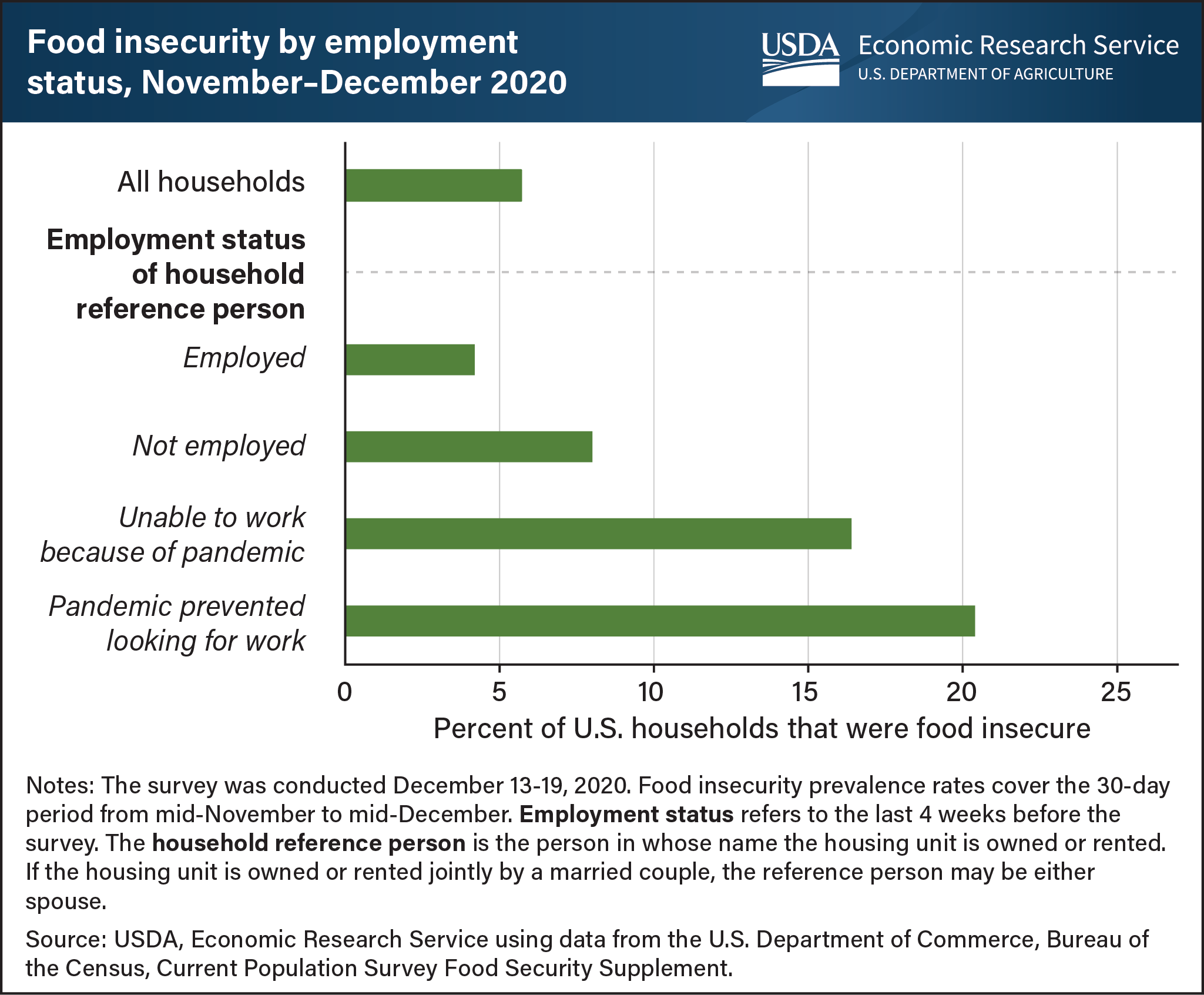Food insecurity in late 2020 most prevalent among those unable to look for work because of pandemic
- by Alisha Coleman-Jensen
- 11/19/2021

Food insecurity among U.S. households was substantially higher in late 2020 when people were unable to work or were prevented from looking for work because of the Coronavirus (COVID-19) pandemic. The annual Current Population Survey Food Security Supplement, sponsored by USDA, Economic Research Service (ERS), collected information on food security among the Nation’s households in December 2020. The survey included questions about effects of the pandemic on work activities during the prior 4 weeks. Households experiencing food insecurity in the 30 days before the survey reported they had difficulty providing enough food for all their household members because of a lack of resources. From mid-November to mid-December 2020, households with a reference person (an adult household member in whose name the housing unit is owned or rented) who was not employed (unemployed or not in the labor force) had a higher prevalence of food insecurity at 8.0 percent compared with all U.S. households (5.7 percent). Those with an employed reference person had a lower food insecurity prevalence at 4.2 percent. For households with a reference person unable to work because of the pandemic, the prevalence of food insecurity was 16.4 percent, substantially higher than the national average of 5.7 percent. The same is true for households that had an unemployed reference person who was prevented from looking for work because of the pandemic, with a food insecurity prevalence of 20.4 percent. The statistics appearing in this chart are included in a table in the ERS report, Household Food Security in the United States in 2020, released September 8, 2021. A similar figure appears in ERS interactive charts on food security.


